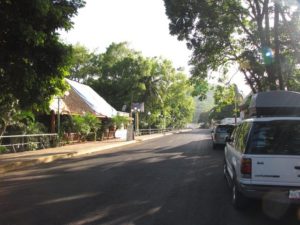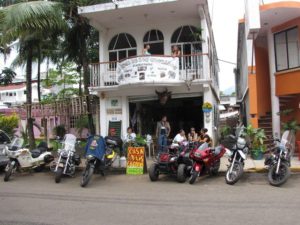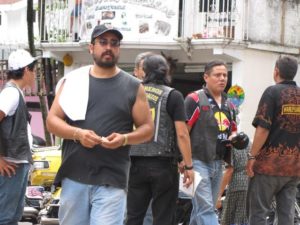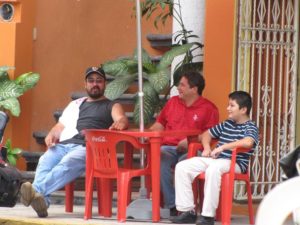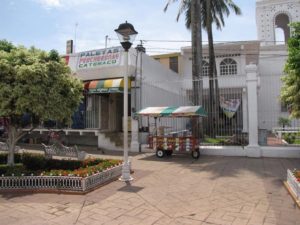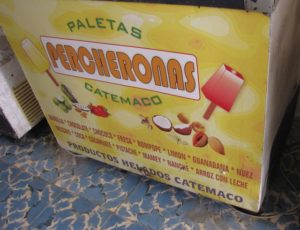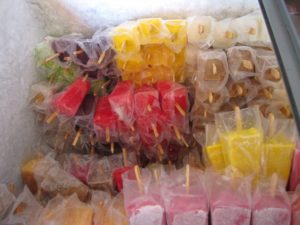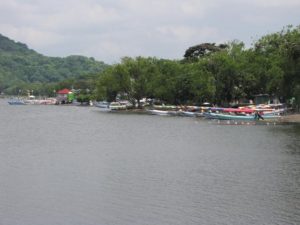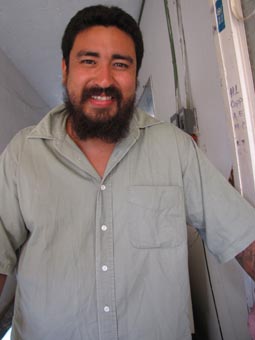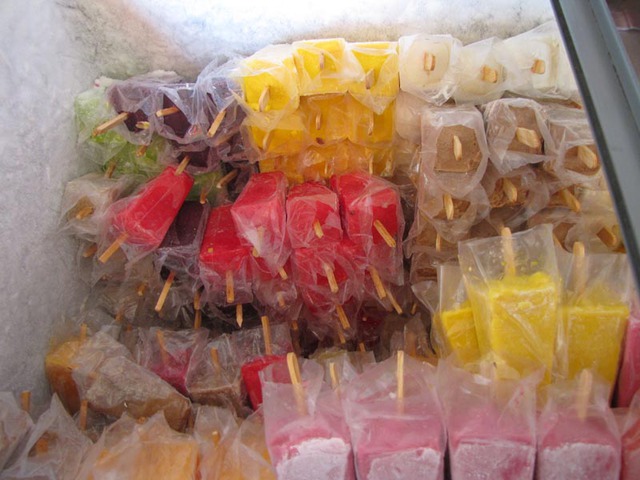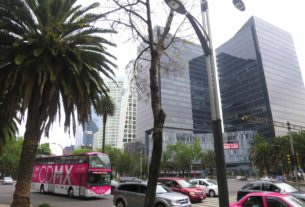I stepped to the front of the restaurant, near the screen, and turned around. From the darkened room, the worst motorcycle gang in southern Mexico stared back. Then I noticed these rough looking, leather-clad and tattooed hombres were enjoying paletas — Mexico’s fresh fruit popsicles.
What one can learn about a product as — well as oneself — in the remotest places is amazing. Revisiting Catemaco, Mexico for the umpteenth-time, I pulled to the curb in front of Casa de Los Caballos, a bar and restaurant, to visit the owner, my old amigo Jose Alfredo Avila Carrillo, known as Alfredo. With night rapidly swallowing dusk and the last light off Laguna Catemaco, Alfredo introduced me to nine motorcyclists and three of their wives. Not “Hello everyone, I’m Bill.” This was a Mexican motorcyclist introduction. I shook hands and leaned into a half shoulder bump/hug all around. I learned we’d be watching a video of a couple of the members’ recent bike ride to a rally near Puebla.
Mexican motorcyclists differentiate clubs versus gangs. They don’t like gangs and are quick to share that opinion. However, Mexican bikers love the masquerade aspects of American motorcycle gangs, creating a high demand for black leather, membership patches and colorful emblems. The result is a collection of the nicest folks on earth looking like Hell’s Angels in full regalia. Two minutes into the video, one of the guys, Alex, announced, “I’m going for popsicles.”
It turns out Alex is in the popsicle business and takes orders from everyone. I’m old-school Mexico, meaning I knew Mexico before it was modernized, and ingrained habits are hard to break. Alex, with an all-encompassing smile that says without words, you’re with friends stranger, asks me three times what kind of popsicle I want. I decline and lie each time that I am full. But there is no way the warm Alex will be denied treating a new friend. Thankfully, he refuses to take “no” for an answer and says, “I’ll bring you a paleta de mamey.”
I’ve visited Mexico often over a long period of time. I go back to days when you did not drink the water under any conditions, short of dying of thirst. Halazone tablets were used, and if memory serves, you put two in a canteen and waited twenty-four hours before drinking. That early conditioning prevented me from trying water-based products in the four decades since. Now, I sat wondering what in the world is mamey? Mexico always had fruits I’d never heard of. I never learned the names and just ate them when they were served. I sure hoped I’d like mamey.
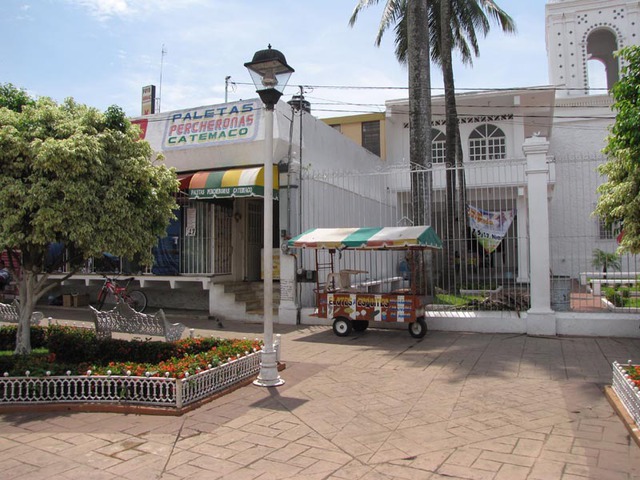
In ten minutes, Alex returned and a heavy trapezoid paleta filled every hand. We resumed watching the ride to Puebla. The heck with the motorcycle video, I got lost in the frigid deliciousness of some unknown fruit. I’d have to find out about this mamey fruit and Mexican popsicles. Obviously, I’d missed a great deal as Mexico modernized over the years.
The following morning I tracked Alex down. I wanted to know about these fruit popsicles. His shop, Paletas Percheronas Catemaco, sits on the gleaming plaza next to the Cathedral in Catemaco, Mexico. The señorita working the counter disappeared into the interior and a moment later burly Alex stepped out. The same all-encompassing smile covered his face. “You ready to try a different flavor?”
I realize there’s no way I’m going to be able to refuse this warm-hearted fellow. I act like I always enjoy a popsicle at 10:30 every morning. Alex grabs some extra napkins and we sit on a green iron park bench fifteen feet from the shop. I enjoyed Alex’s company and my first peanut popsicle while learning about the history of popsicles in Mexico. “My grandfather, Indalecio Moreno Garcia, started the business forty or fifty years-ago. My father passed the company on to me about fifteen years ago and I added ice cream fruit popsicles to our traditional water-based popsicles ten years ago.”
My mind drifted back to when I avoided any untreated water product. Alex lacked the years to know that old Mexico. Ironically, I’d motorcycled through Catemaco in 1971. I wondered if I might have seen his grandfather wheeling a small cart selling his first popsicles that July. There was virtually no refrigeration. Some towns had fábricas de hielo, or icehouses. I wondered how those first popsicle men made their products. On hot days, I’d spot the vendors with wonderful purple, red and yellow icy treats. Those freezing popsicles always looked so delightful and perfect to counter the subtropical heat, but they were off limits because of the water.
Alex and I squeezed past the display freezer and entered a long hallway. The storefront opened to his large home and the deep hall held multiple freezers. “I store my fruit in these,” he said handing me several of the coldest, hardest, clear plastic bags I’ve ever felt. “I can’t get soursop, (guanábana) or fruit like mamey, chagalapoli and nanche except in January February and March. We have varieties of fruit like coconut, mamey, strawberry, lemon, soursop, chocolate, vanilla, eggnog, pecan, nanche, peanuts, coffee liqueur, rice pudding, chococo, coffee and biscuit, and water popsicles. I usually make the fruit products on Sunday mornings. About thirteen pounds of fruit and thirty liters of milk to make premium ice cream are poured into the molds of sixty pallets to make 1,800 high quality popsicles. Sometimes I make more if demand is high.”
Paletas Percheronas Catemaco had really taken off over the years. Alex had other shops in Veracruz, Coatzacoalcos, Minatitlan and San Andres Tuxtla. All the popsicles were made on site in Catemaco. At four in the morning, two or three times a week, Alex loaded his truck and made deliveries to those cities. All I really knew was, despite now knowing perhaps the nicest motorcycle-popsicle tycoon in the world, I had to escape Catemaco and my new friend, Alex, before I gained a hundred pounds eating mysterious fruit and ice cream confections.

